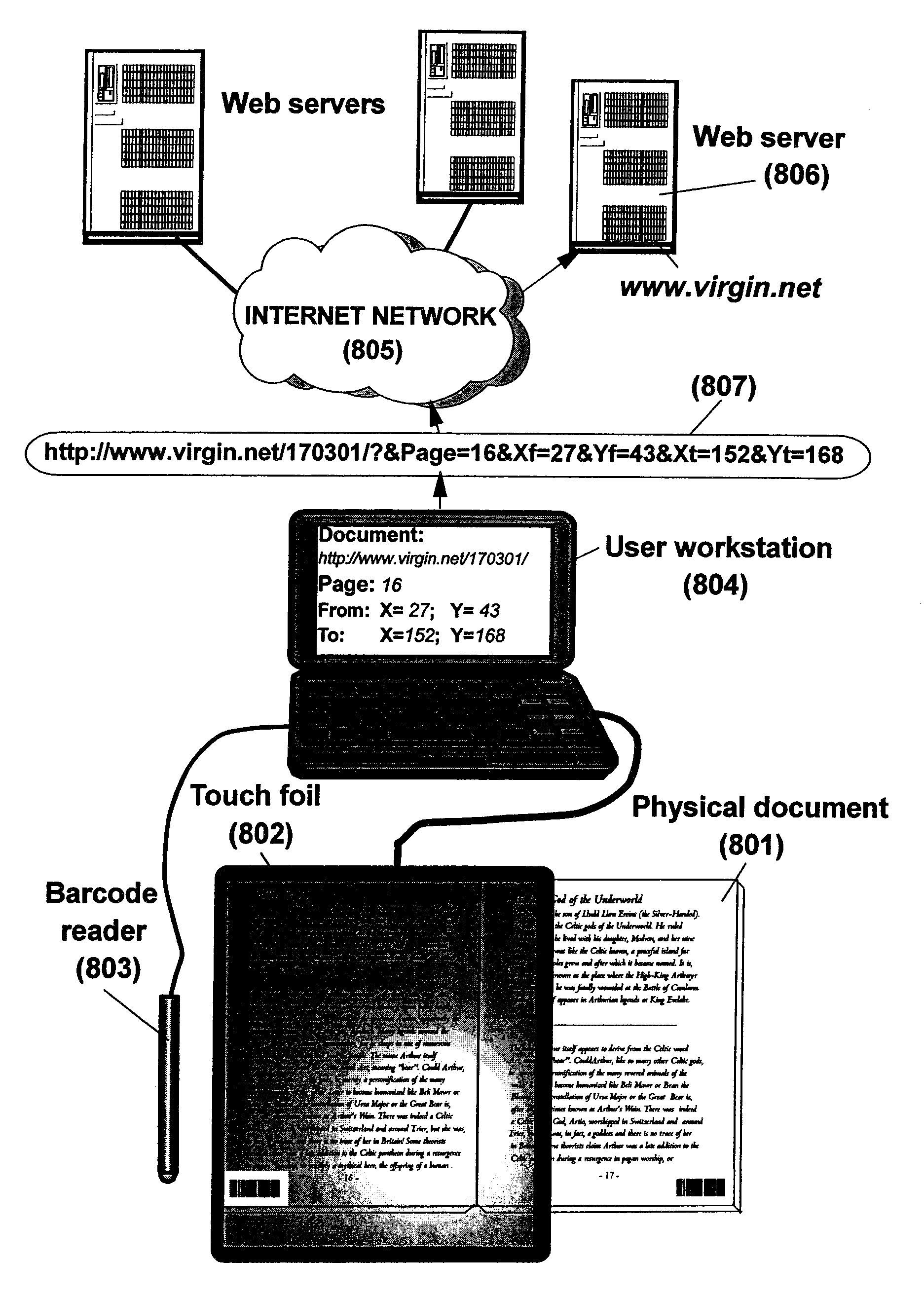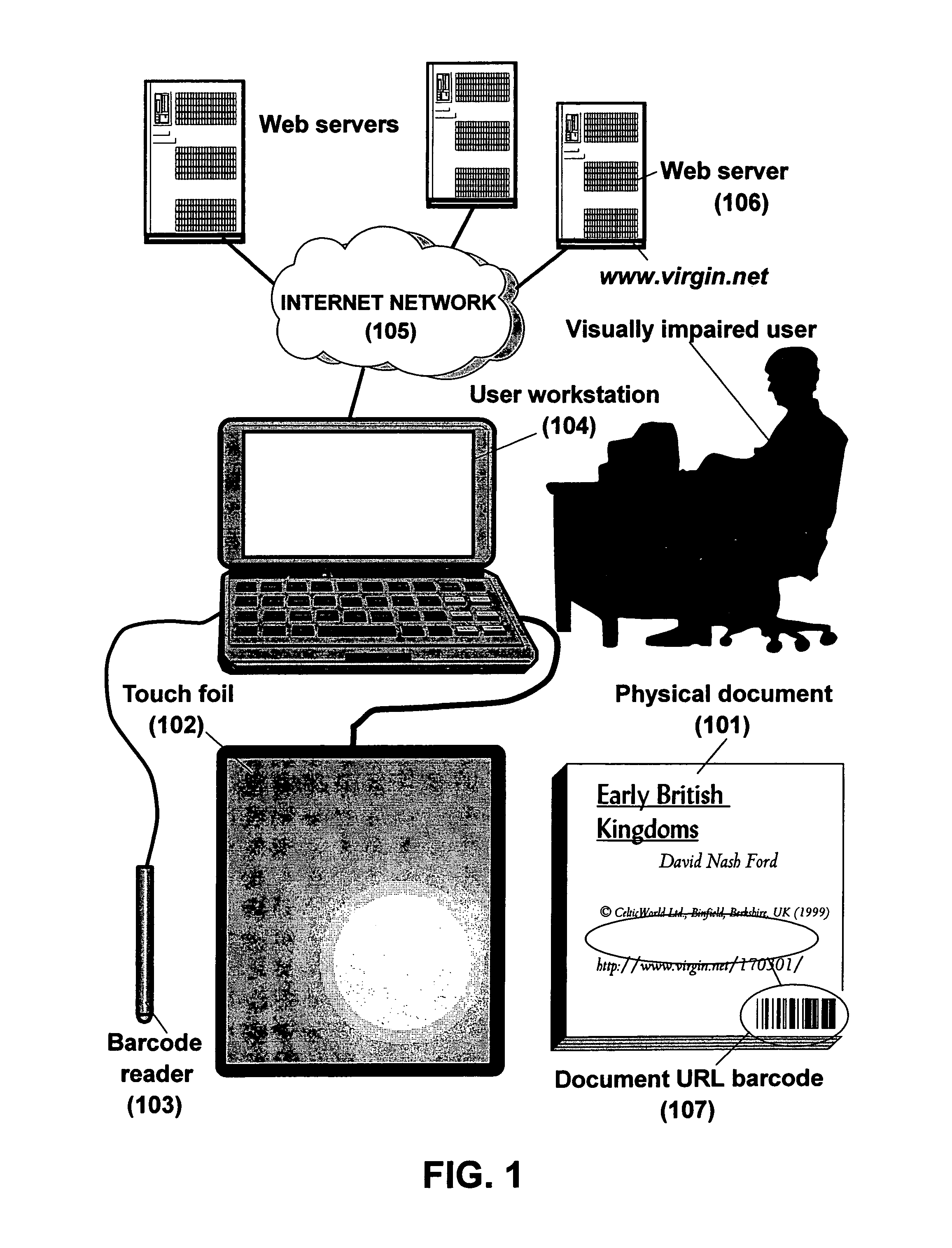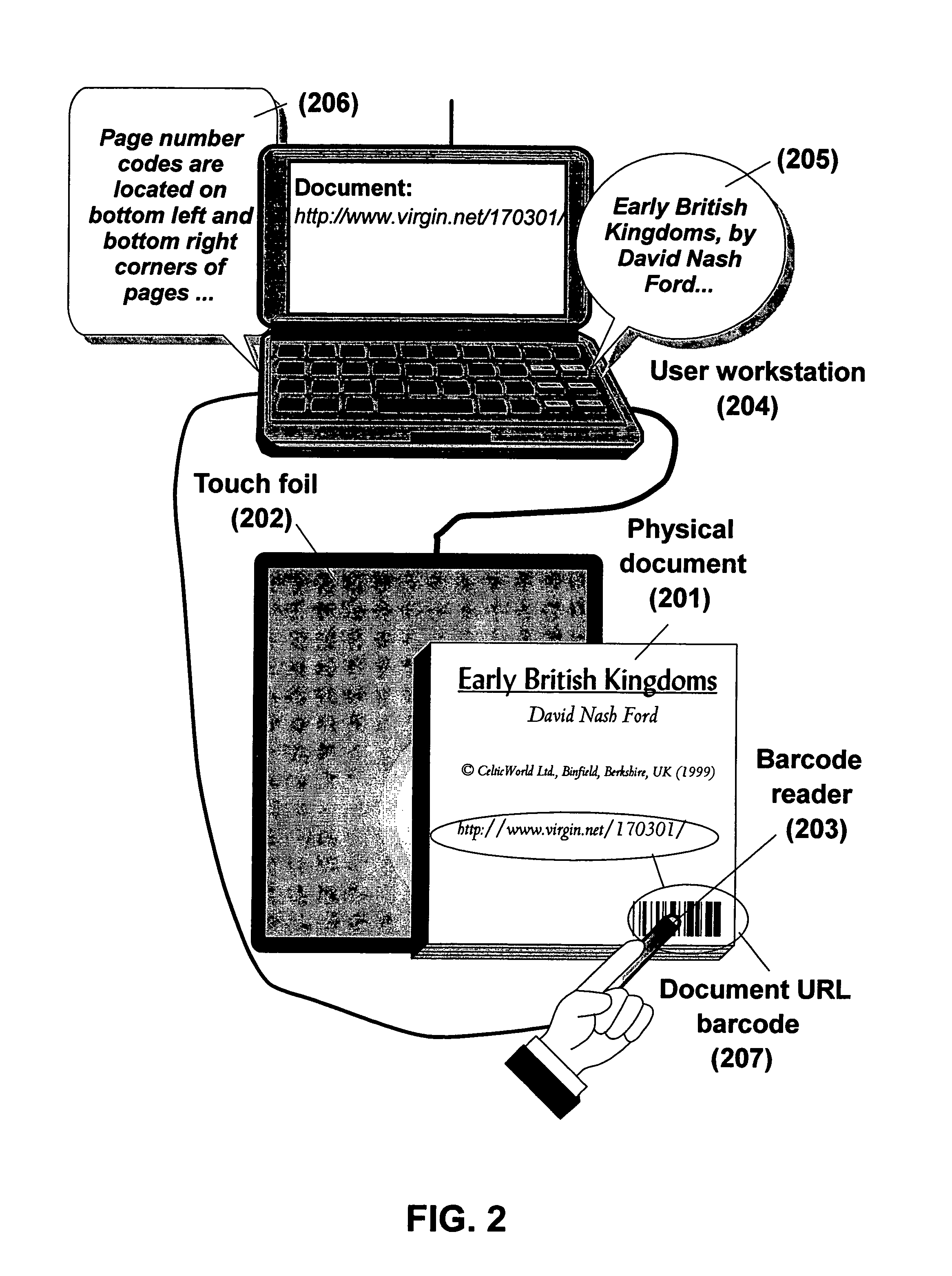System and method to enable blind people to have access to information printed on a physical document
a technology of physical documents and information, applied in the field of system and method to enable blind people to have access to information printed on physical documents, can solve the problems of general and massive replacement of paper books by electronic books, drawbacks of audio tapes, and difficulty in predicting, and achieve the effect of easy readable versions
- Summary
- Abstract
- Description
- Claims
- Application Information
AI Technical Summary
Benefits of technology
Problems solved by technology
Method used
Image
Examples
Embodiment Construction
[0087]The present invention addresses different problems that may arise in reading text, particularly problems that affect visually impaired persons or persons who cannot see or read correctly (e.g., in low light conditions). For instance:[0088]a person driving a vehicle may have some difficulties to read a text;[0089]another person may not have time to read a text;[0090]bad lighting or display conditions may make difficult or impossible the reading of a text in a printed or displayed form.
[0091]The present invention allows a blind reader to receive an audible transcription of a selected part of a physical document (for example an audible transcription of a selected text in book).
[0092]The present invention also discloses a method for selecting a part of a physical document simply by pressing with a fingertip or a pen a touch foil placed over said document; for identifying data associated with this selected part in a database comprising an electronic copy of the document; for extrac...
PUM
 Login to View More
Login to View More Abstract
Description
Claims
Application Information
 Login to View More
Login to View More - R&D
- Intellectual Property
- Life Sciences
- Materials
- Tech Scout
- Unparalleled Data Quality
- Higher Quality Content
- 60% Fewer Hallucinations
Browse by: Latest US Patents, China's latest patents, Technical Efficacy Thesaurus, Application Domain, Technology Topic, Popular Technical Reports.
© 2025 PatSnap. All rights reserved.Legal|Privacy policy|Modern Slavery Act Transparency Statement|Sitemap|About US| Contact US: help@patsnap.com



